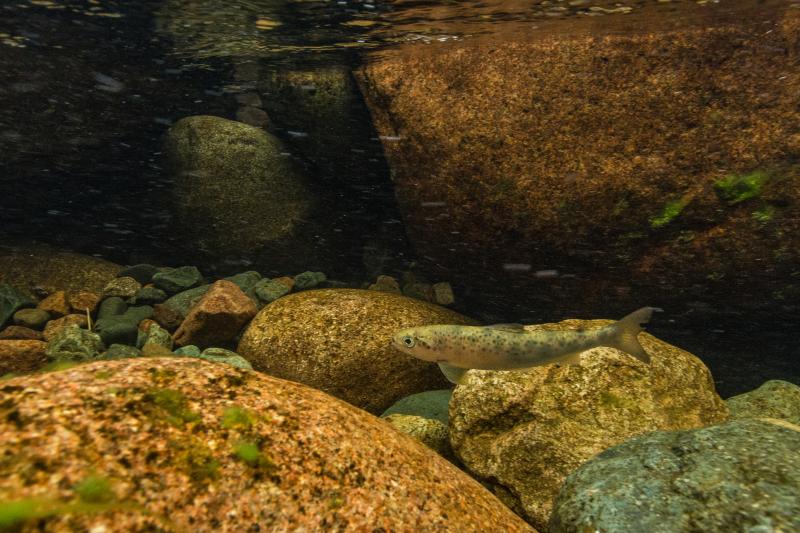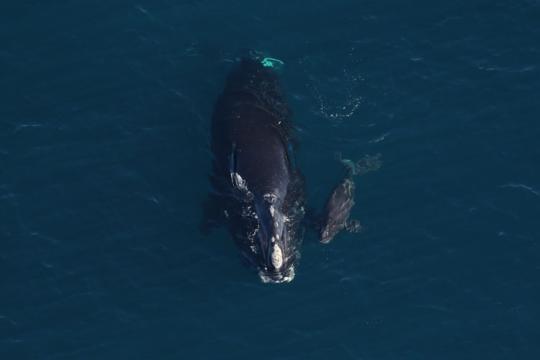Atlantic salmon are an endangered species in the United States with the only remaining populations in the state of Maine. Atlantic salmon need access to a wide variety of habitats during their lives as they move from rivers to the ocean and back again. In rivers, they also need relatively cool freshwater, ideally below 70°F. As the climate continues to warm, stream habitat that remains cool enough for Atlantic salmon during the summer may become increasingly rare. Atlantic salmon are among the most vulnerable species to the effects of climate change in the Northeast, partly because of their temperature sensitivity. With expected rises in stream temperature, the amount of suitable habitat will likely decrease. This makes it critical to focus conservation and restoration efforts in areas that the fish are most likely to favor.
Cool Streams Make for Good Habitat
Stream temperature is affected by many factors including air temperature and shading from vegetation. Another important factor is how much of a stream’s flow comes from underground sources rather than land surface runoff. Streams with a high proportion of groundwater tend to be cooler than those with greater quantities of surface water because surface runoff is exposed to sunlight and land surface air temperature as it travels to the stream. Areas along a stream network that are rich in groundwater, or “baseflow”, are important for coldwater fish like Atlantic salmon and brook trout. They can buffer the effects of increasing air temperature. These areas also usually have more flow, and therefore more habitat, during periods without significant rainfall.
Predicting to Help Prioritize
To help identify stream reaches likely to be favored by coldwater fish, the U.S. Geological Survey, NOAA Fisheries, and the Maine Department of Marine Resources identified environmental attributes that can be used to predict stream reaches that are rich in baseflow. We developed a model to predict where these reaches are likely to occur across the freshwater range of Atlantic salmon in Maine.
“Atlantic salmon are like a canary in a coal mine. If they can’t complete their life cycle, it tells us that something is wrong with their habitat. We are concerned that there is not enough cool water for them. Our partners were critical in helping to start to identify areas that will sustain Atlantic salmon and other temperature-sensitive species like brook trout in the future,” said Rory Saunders, fisheries biologist with NOAA Fisheries’ Greater Atlantic Regional Fisheries Office. Using maps derived from these predictions, we can identify and prioritize conservation actions like fish passage projects that ensure Atlantic salmon can access baseflow-rich stream sections.
For more information about this project, contact Pam Lombard (USGS) or Matt Collins (NOAA).






